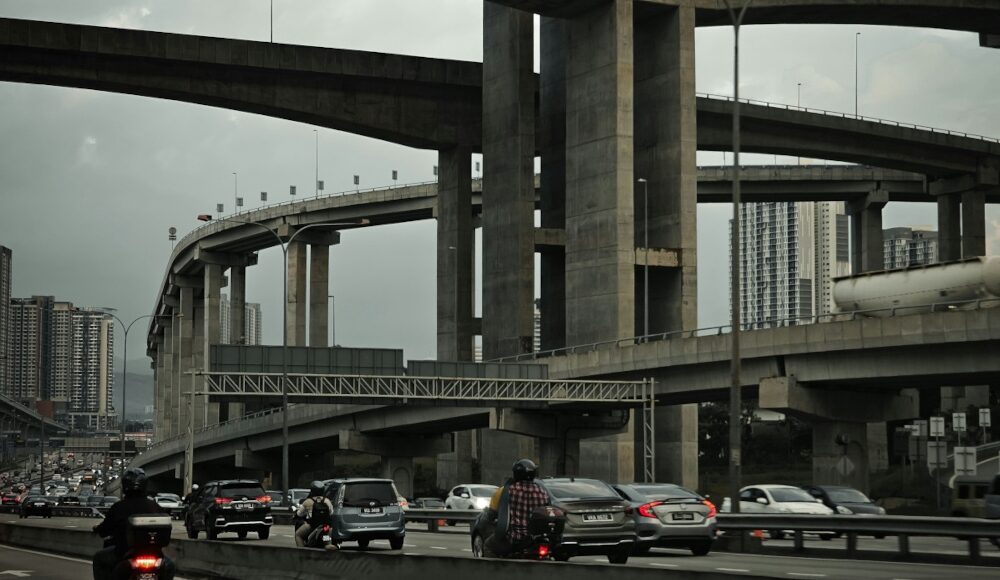JULY 11 — On a drizzly evening in Kuala Lumpur, a dashcam video captures a car abruptly swerving into another lane without signalling, cutting off a motorcyclist who is lane-splitting through traffic and forcing him to brake sharply.
The furious motorcyclist revs his engine and yells in anger, shaking his fist at the car driver.
Moments later, both vehicles stop in the middle of the busy road.
The motorcyclist jumps off his bike, helmet still on, while the car driver steps out with fists clenched as traffic piles up behind them and headlights flash.
Another motorist nearby records the confrontation on a smartphone, capturing every second of the shouting, shoving, and angry gestures.
Road rage, the dangerous cocktail of impatience and aggression on our roads, has become a disturbingly common scene from city streets to major highways. — Unsplash pic
By the next morning, the video had gone viral, shared thousands of times, sparked heated debates and flooded social media timelines.
Sounds familiar?
Road rage, the dangerous cocktail of impatience and aggression on our roads, has become a disturbingly common scene from city streets to major highways.
Beyond the immediate danger and emotional trauma, these incidents leave behind a heavy economic burden that ultimately affects us all.
A costly chain reaction
According to the American Automobile Association (AAA), aggressive driving contributes to 56% of fatal crashes in the United States.
Closer to home, the Malaysian Institute of Road Safety Research (MIROS) estimated that road accidents cost the nation a staggering RM8.8 billion in 2023 alone.
Aggressive driving behaviours such as tailgating, sudden braking, and dangerous overtaking often lead to collisions and damage that require costly repairs.
A single road rage incident can set off a chain reaction, from smashed bumpers and cracked windscreens to hours stuck in gridlock while emergency teams clear the scene.
A road rage encounter may not always end in a major collision, but the resources involved such as police intervention, legal processing, and public safety responses, all come with a price tag.
Insurance premiums (or takaful contributions) on the rise
In Malaysia, insurance premiums and takaful (Islamic insurance) contributions are determined based on a driver’s risk profile and claim history.
When drivers are involved in aggressive or at-fault incidents, they risk losing their No-Claim Discount (NCD), which can reduce premiums by up to 55% for careful drivers.
Losing this discount means paying significantly higher premiums or contributions the following year, sometimes amounting to a 20 to 30 per cent increase depending on the insurer or takaful operator and the severity of the claim.
Whether through conventional insurance or takaful, the result is the same. All in all, responsible drivers end up indirectly sharing the financial burden caused by aggressive road behaviour.
Impact on workplace productivity
When someone is involved in a road rage incident, the impact rarely ends at the roadside.
Victims and perpetrators alike may need time off work to recover physically or emotionally, attend police interviews, or navigate legal proceedings.
The Malaysian Employers Federation (MEF) estimates that absenteeism costs businesses over RM6 billion every year, with road accidents being a significant contributor.
Imagine an executive stuck for an extra hour on the way to a critical meeting because two drivers decided to settle their score in the middle of the road.
That lost hour translates into delayed decisions, missed opportunities, and disrupted operations, creating a ripple effect that stretches far beyond one company.
When multiplied across hundreds of similar incidents each year, the cumulative effect is a serious drag on national productivity and economic competitiveness.
Time to break the cycle
Breaking the cycle of road rage requires more than just enforcing laws. It demands a cultural shift toward empathy and responsibility.
Stronger public awareness campaigns are essential to show that patience and courtesy are not only moral choices but also smart economic decisions that save money and lives.
Employers can play a role by offering flexible working hours or remote work options to help reduce peak-hour congestion and lower commuter stress.
On an individual level, taking a simple walk can be surprisingly powerful in preventing anger from spiralling into road rage.
A 2018 study published in Health Promotion Perspectives found that just 10 minutes of brisk walking significantly reduced feelings of tension and anger, or in today’s lingo, helped prevent us from “getting triggered.”
So, the next time you feel your temper rising behind the wheel, try taking a deep breath first, then consider stepping out for a quick walk. Even a short stroll around a parking lot or nearby sidewalk can help calm the mind and reset your emotions.
As stated in a hadith by Prophet Muhammad (peace be upon him), “The strong is not the one who overcomes the people by his strength, but the strong is the one who controls himself while in anger” (Sahih al-Bukhari, Hadith 6114).
Choosing to walk away from anger is more than a personal win. It is an investment in a safer, healthier, and more prosperous Malaysia.
* Dr Mohd Zaidi Md Zabri is Interim Director at the Centre of Excellence for Research and Innovation in Islamic Economics (i-RISE), ISRA Institute, INCEIF University.
** This is the personal opinion of the writer or publication and does not necessarily represent the views of Malay Mail.





